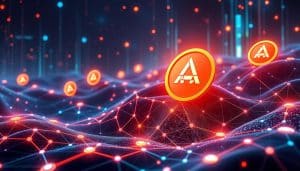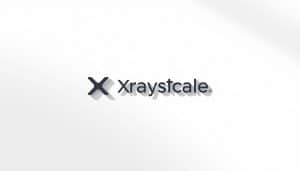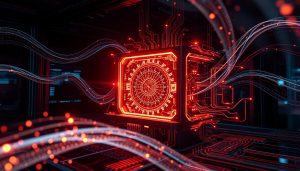Key Takeaways
- Understanding Ethereum Mining: Mining Ethereum involves validating blockchain transactions via powerful computers to earn Ether (ETH), securing the network and enabling decentralized applications (dApps).
- Hardware Selection is Key: Successful mining requires a robust GPU; popular choices include NVIDIA’s GeForce RTX series and AMD’s Radeon RX series, ensuring proper cooling and power supply are in place.
- Mining Software Setup: Choose the right mining software (e.g., Claymore, PhoenixMiner, Ethminer) to efficiently configure your mining operation and connect to a mining pool for increased earnings.
- Solo vs. Pool Mining: Solo mining offers full rewards but is less feasible for most due to low success odds; pool mining increases the chances of earning consistent rewards by combining resources with other miners.
- Consider Cloud Mining: For those preferring a hands-off approach, cloud mining allows users to lease mining power without the need for hardware, though due diligence is necessary to select trustworthy providers.
- Profitability Factors: Mining profitability is greatly influenced by electricity costs, network difficulty, and reward structures; minimizing costs and staying informed on Ethereum’s evolving consensus mechanism can enhance earnings.
If you’ve ever thought about diving into the world of cryptocurrency, mining Ethereum might just be the perfect entry point. As one of the most popular cryptocurrencies, Ethereum offers unique opportunities for those looking to harness their computing power for profit. With the right knowledge and tools, you can tap into this digital gold rush and potentially reap significant rewards.
But mining isn’t just about the potential profits; it’s also a fascinating blend of technology and finance. You’ll need to understand the underlying mechanics of blockchain, the importance of mining pools, and the hardware requirements to get started. Whether you’re a tech enthusiast or a seasoned investor, mining Ethereum can be an exciting venture that opens the door to the broader world of cryptocurrencies.
What Is Ethereum Mining?
Ethereum mining involves validating transactions on the Ethereum blockchain by solving complex mathematical problems. Miners use powerful computers to compete for the right to add new blocks to the blockchain. Successful miners receive Ether (ETH), the native cryptocurrency of Ethereum, as a reward for their contributions.
Miners process transactions, execute smart contracts, and maintain the network’s integrity. This process secures the blockchain against fraud and ensures the smooth operation of decentralized applications (dApps). Ethereum’s mining relies on a proof-of-work (PoW) consensus mechanism, which requires significant computational power.
As technology evolves, so do the challenges faced by miners. Environmental concerns related to energy consumption prompt discussions about transitioning to proof-of-stake (PoS), which would significantly reduce power usage. Both beginners and experienced individuals can engage in Ethereum mining, making it a versatile opportunity in the cryptocurrency space.
Understanding mining pools plays a crucial role in maximizing your mining efforts. Joining a mining pool allows you to combine computational resources with other miners, increasing your chances of earning rewards. Pool members share the rewards based on their contributed processing power.
How to Mine Ethereum
Mining Ethereum requires specific hardware and software setups to efficiently validate transactions on the blockchain. Here’s a breakdown of the necessary steps and considerations for successful mining.
Choosing the Right Hardware
Selecting appropriate hardware is crucial. You’ll need a powerful GPU (graphics processing unit), as it offers high hash rates compared to CPU mining. The following equipment often works well for Ethereum mining:
- NVIDIA GPUs: Popular models include the GeForce RTX 3080 and RTX 3090 for their efficiency and performance.
- AMD GPUs: The Radeon RX 6800 and RX 6900 XT are highly regarded for gaming and mining tasks.
- Mining Rigs: Complete mining rigs combine multiple GPUs, maximizing mining power and efficiency.
Ensure sufficient cooling and power supply to support the hardware, as mining generates significant heat and requires stable electricity.
Setting Up Mining Software
Once you’ve chosen your hardware, you’ll need to install mining software. Various options exist, each offering different features and compatibility with Ethereum. Consider these popular software choices:
- Claymore: Offers dual mining capabilities for Ethereum and other cryptocurrencies, maximizing profit.
- PhoenixMiner: Known for its easy setup and high performance on both AMD and NVIDIA cards.
- Ethminer: An open-source option that supports both Windows and Linux.
After installation, configure the mining software with your wallet address and choose a mining pool to enhance earning potential. Joining a mining pool allows you to share computational power and rewards, leading to more frequent payouts.
Mining Ethereum successfully combines understanding hardware components and effectively using mining software. Following these guidelines helps you optimize your mining efforts.
Types of Mining
Mining Ethereum can occur through different methods, each with unique features and potential rewards. Understanding these types enables you to make informed decisions when engaging in mining activities.
Solo Mining vs. Pool Mining
Solo mining involves using your own hardware and software to mine Ethereum independently. You receive all rewards from successfully mined blocks, but the probability of finding a block diminishes significantly without substantial computational power.
Pool mining aggregates the resources of multiple miners to enhance the chances of earning rewards. Miners contribute their computational power to a mining pool and receive fractions of rewards proportionate to their contributions. This method stabilizes income and provides consistent earnings, making it an appealing choice for many miners.
Cloud Mining Options
Cloud mining permits users to lease mining power from remote data centers. This option eliminates the need for expensive hardware and ongoing maintenance. Miners pay a fee and receive a share of the mined cryptocurrencies. Cloud mining companies typically manage hardware, cooling systems, and other logistical aspects, making it a convenient solution for those who prefer simplicity. However, researching reputable cloud mining services is essential to avoid scams and ensure reliable returns.
Factors Affecting Mining Profitability
Mining profitability hinges on several pivotal factors, primarily relating to costs and network dynamics. Understanding these elements helps optimize your mining operations.
Electricity Costs
Electricity costs significantly impact mining profitability. Miners require substantial energy to operate powerful GPUs or ASICs, with costs varying by region. For instance, mining in areas where electricity rates are lower, such as certain states in the U.S. or countries with abundant renewable energy, can maximize profit margins. Miners often calculate their potential profits by estimating the hash rate of their equipment against local electricity costs.
Mining Difficulty and Rewards
Mining difficulty fluctuates based on network activity and the total hash rate of miners. Higher difficulty reduces the chances of earning rewards per block mined. Conversely, the reward for successfully mining a block can significantly influence profitability; it currently involves earning Ether (ETH) along with transaction fees. As the Ethereum network undergoes changes, including potential shifts from proof-of-work (PoW) to proof-of-stake (PoS), understanding these dynamics is crucial for maximizing earnings in a competitive environment.
Conclusion
Mining Ethereum offers a unique blend of technology and finance that can be both rewarding and challenging. By understanding the intricacies of hardware requirements and mining methods you can enhance your chances of success. Joining a mining pool can provide a more stable income while leveraging the power of collective resources.
As the Ethereum network evolves with potential shifts in consensus mechanisms your approach to mining may need to adapt. Staying informed about market dynamics and technological advancements will be key to maximizing your profitability. Whether you’re a beginner or a seasoned miner embracing these elements can lead to fruitful opportunities in the ever-changing cryptocurrency landscape.
Frequently Asked Questions
What is Ethereum mining?
Ethereum mining is the process of validating transactions on the Ethereum blockchain by solving complex mathematical problems. Miners use powerful computers to compete for the chance to add new blocks, and in return, they earn Ether (ETH) as a reward.
How do I start mining Ethereum?
To start mining Ethereum, you’ll need suitable hardware, like a powerful GPU, and mining software. Joining a mining pool is also recommended to increase your chances of earning rewards. Set up a wallet for Ether and configure your software accordingly.
What hardware is best for Ethereum mining?
Recommended hardware for Ethereum mining includes powerful GPUs such as NVIDIA’s GeForce RTX 3080 and RTX 3090, as well as AMD’s Radeon RX 6800 and RX 6900 XT. Mining rigs with multiple GPUs can significantly boost efficiency.
What is a mining pool?
A mining pool is a group of miners who combine their computational resources to increase their chances of earning rewards. The rewards earned are then distributed among the pool members based on their contributed power, providing a more stable income compared to solo mining.
What software should I use for Ethereum mining?
Popular mining software options include Claymore, PhoenixMiner, and Ethminer. Each has unique features designed to optimize mining performance, allowing miners to configure the software with their wallet address and pool preferences.
What are the different mining methods for Ethereum?
The three main mining methods for Ethereum are solo mining, pool mining, and cloud mining. Solo mining involves independent mining efforts, pool mining combines resources for stability, while cloud mining allows leasing of mining power from remote data centers.
How does electricity cost affect mining profitability?
Electricity costs are a significant factor that influences mining profitability. Lower electricity rates enhance profit margins, so miners often calculate their profits by comparing the hash rate of their equipment with local electricity rates.
What is the difference between proof-of-work and proof-of-stake?
Proof-of-work (PoW) requires miners to solve complex problems to validate transactions, consuming considerable energy. Proof-of-stake (PoS) replaces this method by allowing validators to create new blocks based on the amount of cryptocurrency they hold, which reduces energy consumption.
Is cloud mining safe?
While cloud mining offers convenience, it’s essential to research reputable services to avoid scams. Look for verified reviews and transparent operations to ensure your investment is secure when using cloud mining platforms.
























 Bitcoin
Bitcoin  Ethereum
Ethereum  Tether
Tether  XRP
XRP  USDC
USDC  Solana
Solana  Lido Staked Ether
Lido Staked Ether  TRON
TRON  Dogecoin
Dogecoin  Cardano
Cardano  Figure Heloc
Figure Heloc  WhiteBIT Coin
WhiteBIT Coin  Wrapped stETH
Wrapped stETH  Bitcoin Cash
Bitcoin Cash  Wrapped Bitcoin
Wrapped Bitcoin  USDS
USDS  Chainlink
Chainlink  Wrapped eETH
Wrapped eETH  Binance Bridged USDT (BNB Smart Chain)
Binance Bridged USDT (BNB Smart Chain)  LEO Token
LEO Token  WETH
WETH  Hyperliquid
Hyperliquid  Monero
Monero  Stellar
Stellar  Zcash
Zcash  Coinbase Wrapped BTC
Coinbase Wrapped BTC  Ethena USDe
Ethena USDe  Litecoin
Litecoin  Sui
Sui  Avalanche
Avalanche  Hedera
Hedera  Shiba Inu
Shiba Inu  sUSDS
sUSDS  USDT0
USDT0  Dai
Dai  Mantle
Mantle  PayPal USD
PayPal USD  Toncoin
Toncoin  World Liberty Financial
World Liberty Financial  Cronos
Cronos  Ethena Staked USDe
Ethena Staked USDe  Uniswap
Uniswap  Polkadot
Polkadot  Aave
Aave  MemeCore
MemeCore  USD1
USD1  Bittensor
Bittensor  Rain
Rain